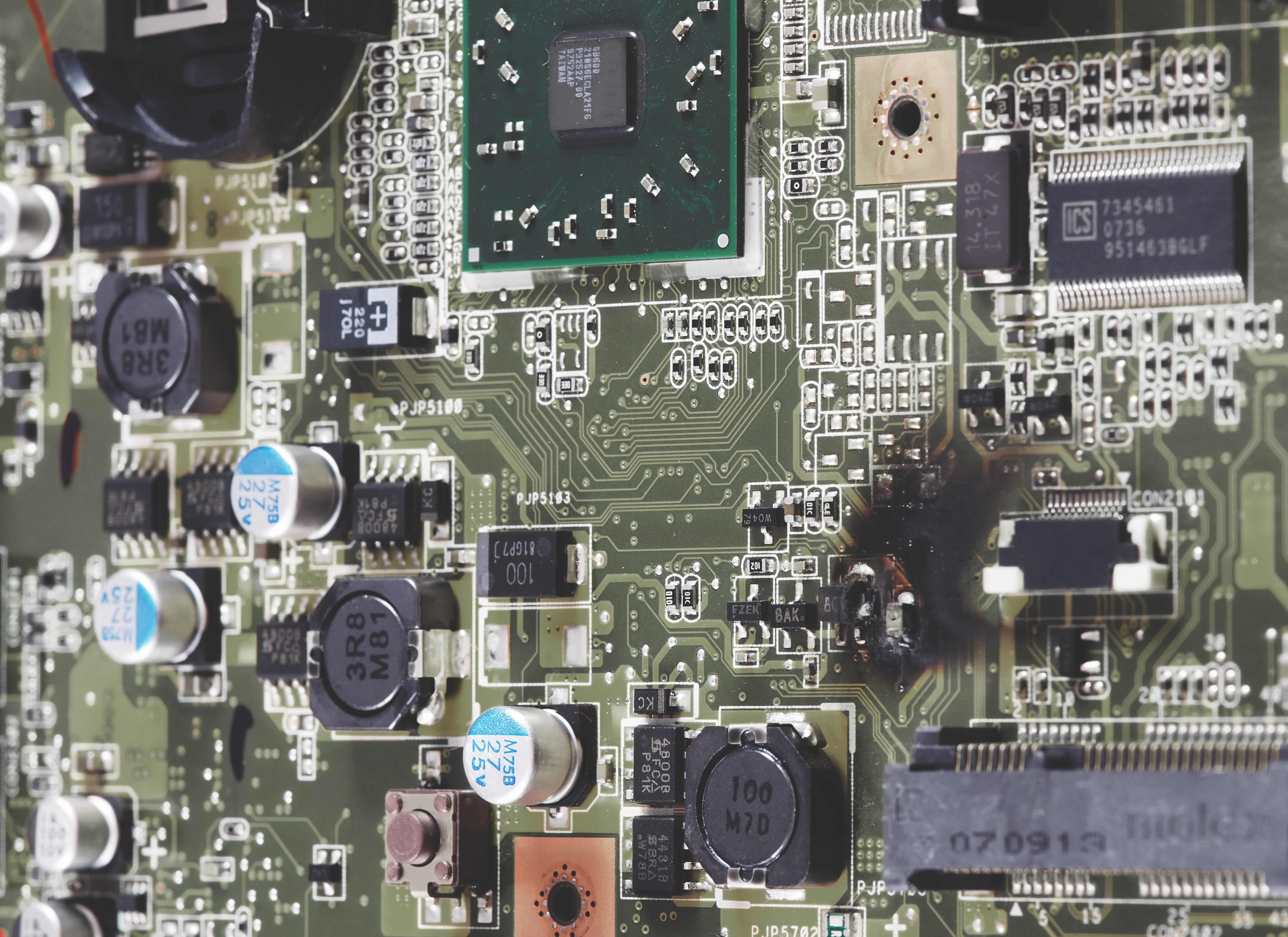Surge protection standards and surge protection designs have been updated to reflect the major trends of growing reliance on electronic systems and renewable energy. We speak to Samad Khan, Global Product Manager for Furse, to find out more about the impact of the 18th Edition on surge protection and the correct use of surge protection devices (SPDs) to protect against repeated “worst case” transients.

What are electrical surges and what damage can they do?
Electrical surges, or transient overvoltages, are voltage spikes on power, signal or telecommunications lines that can overload components, leading to failure. Lightning surges can reach 6,000 V in an electrical installation, with devastating results – even for lightning that strikes up to a kilometre away from the structure!
However, surges are also caused by large grid-connected equipment such as motors. When equipment is switched on or off (for example an elevator stopping and starting), this creates switching transients that are smaller in magnitude but more frequent than lightning surges, stressing electronic components. The result is disruption, degradation, damage – all leading to system downtime – the largest cost.
From January 2019, the 18th Edition of the IET Wiring Regulations require all new electrical system designs and installations, as well as alterations and additions to existing installations, to be assessed against the risk from surge voltage damage and where necessary, protected using SPDs. Why?
Society is relying ever-more on sophisticated electronic devices and systems to support our everyday lives. At the same time, electronic systems are shrinking in size, making electronic components more vulnerable to damage from transient overvoltages or surges. As a result, there’s more need for surge protection.
Another driver for surge protection is the integration of renewable energy. Solar and wind facilities rely on electronics in inverters, converters and condition monitoring – and these need to be protected from the electrical surges that arise from lightning.
What were the key regulatory changes?
There were important changes in Chapter 44: Protection against voltage disturbances and electromagnetic disturbances. Prior to the 18th Edition, “AQ criteria” was used to determine whether protection against transient overvoltages was required. This accounts for external conditions that influence lightning. However, the AQ criteria method was removed from the 18th Edition.
Instead, electrical contractors now need to ensure that electronic systems are fitted with SPDs to protect against transient overvoltages where there may be serious consequences. This includes serious injury, loss of life, interruption to public services or commercial activity, damage to cultural heritage, or impact on sites where large numbers of people are gathered.
For all other cases, a simplified risk assessment will determine whether SPDs are required – with the exception being single dwellings in some situations. High risk sites, such as nuclear or chemical facilities, require a full risk assessment, as detailed in part 2 of safety standard BS EN62305 Protection against lightning.
It is important to use suitable SPDs that correctly protect against repeated “worst case” transients. What types are available?
Three types of SPD are available for the electrical power installation – Types 1, 2 and 3 – and these are cumulatively known as a co-ordinated SPD set. There are also combined type SPDs (e.g. Type 1+2+3) that handle high surge currents with safe overvoltage protection levels for sensitive equipment. These have technical, practical and economic benefits over multiple single Type SPDs.
Type 1 SPDs should be installed at the service entrance to protect against loss of life or serious injury in the case of a direct lighting strike. They protect against dangerous sparking where the voltage of a surge exceeds the rated impulse voltage of equipment or cable insulation. Another term for Type 1 SPDs is equipotential bonding SPDs and it is important to know that they do not provide any effective protection for sensitive electrical or electronic systems (in accordance to BS EN62305-4). As a result, additional Type 2 and Type 3 SPDs are required inside structures that contain electrical and electronic systems. They are overvoltage SPDs that further reduce the size of transient overvoltages to safe levels.
Type 2 SPDs provide overvoltage protection for fixed equipment, whereas Type 3 SPDs are used to protect sensitive or critical loads, particularly against switching transients.
It should be noted that where there is a need for SPDs to be applied on the electrical power installation, suitable SPDs for any metallic telecommunication, signal or data lines will also be required, in accordance with the lightning protection zone (LPZ) concept of BS EN62305.
With numerous SPDs on the market, selecting the right products can be complex. What solutions does ABB offer and what are the benefits?
Furse recently launched advanced performance, easy-install Type 1+2 SPDs for mains power supplies – the ESP 240T1 and ESP 415T1 Series.
The compact and space saving Furse ESP T1 SPD series offers the same benefits of our original Type 1+2 ESP SPDs, but with upgraded features, including a new pluggable SPD module design (with anti-vibration locking clip and health indicator), which allows for simple maintenance and replacement at end-of-life. In addition, a remote status indication facility (with fast-fit, tool-less push terminal) allows a pre-failure warning to be connected to a building management system (BMS), buzzer or lighting.
These combined Type 1+2 tested SPDs are designed for use on the main distribution board (typically the service entrance location), particularly where a lightning protection system (LPS) is employed, for equipotential bonding.
Further guidance on 18th Edition surge protection requirements can be found here.

